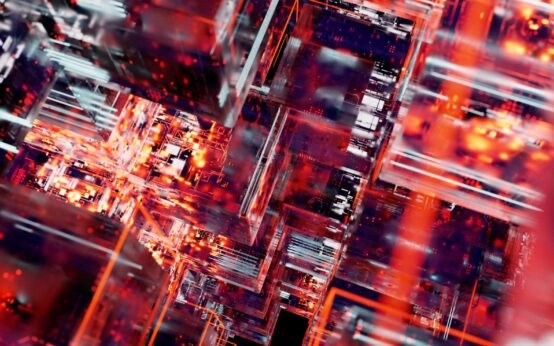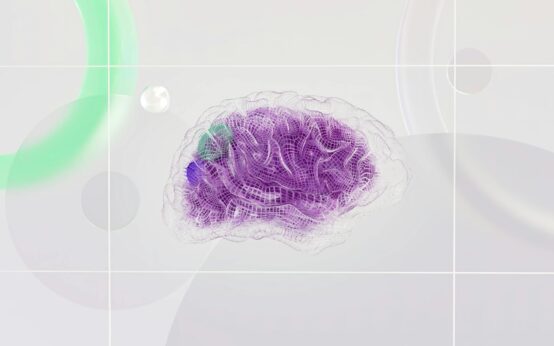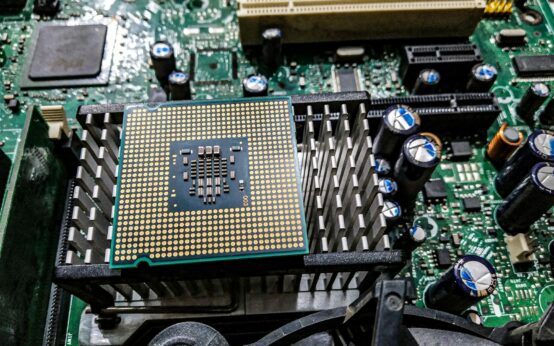The Silent Revolution: How AI is Quietly Rewriting the Rules of Business
You probably interacted with AI today and didn’t even realize it. That movie Netflix recommended with uncanny accuracy? The instant fraud alert from your bank when you bought something online from a new store? That’s not magic. It’s the powerful, often invisible, engine of artificial intelligence at work. We hear the buzzwords all the time—machine learning, neural networks, large language models. But what does it all really mean? It means we’re in the middle of one of the most significant shifts since the internet itself, a period where AI is transforming industries from the ground up. It’s not a far-off, futuristic concept anymore. It’s here, it’s happening now, and it’s changing everything about how we work, shop, and even live.
This isn’t just about chatbots that can answer customer service questions. That’s just the tip of the iceberg. We’re talking about a fundamental rewiring of business operations, creating efficiencies and capabilities that were simply impossible a decade ago. It’s about making smarter, faster, data-driven decisions that impact the bottom line and the customer experience. So, let’s pull back the curtain and look at the real, tangible ways this technology is making waves across the global economy.
Key Takeaways
- AI is More Than Automation: It’s a core strategic tool for innovation, enabling businesses to predict trends, personalize experiences, and solve complex problems.
- Widespread Impact: From diagnosing diseases in healthcare to managing risk in finance, AI’s influence is broad and deep, affecting nearly every major sector.
- The Human Element is Crucial: The future isn’t about AI replacing humans, but augmenting them. AI handles the data-heavy lifting, freeing up people for creativity, strategy, and empathy.
- It’s Happening Now: This isn’t science fiction. Companies of all sizes are leveraging accessible AI tools to gain a competitive edge today.

The Unseen Engine: What Do We *Really* Mean by AI Transformation?
When we talk about ‘transformation,’ it’s easy to picture robots on an assembly line. And while that’s part of it, the true transformation is much deeper. Think of it less like a new tool and more like a new utility, similar to electricity. When electricity was introduced, we didn’t just get electric candles; we got motors, computers, and entire new industries. That’s the scale of change we’re talking about with AI.
At its core, AI transformation is about using intelligent systems to do three things exceptionally well:
- Perceive: Systems that can ‘see’ and ‘hear’ the world. Think of computer vision that scans thousands of legal documents for a specific clause or analyzes medical scans for anomalies humans might miss. It’s about taking in vast amounts of unstructured data—images, text, sound—and making sense of it.
- Predict: This is the realm of machine learning. By analyzing historical data, AI can make incredibly accurate forecasts. It can predict which customers are likely to churn, when a piece of factory equipment is likely to fail, or how much demand there will be for a product next quarter. This moves businesses from being reactive to proactive.
- Generate: This is the new frontier, powered by generative AI. It’s not just about analyzing existing data, but creating something entirely new. This could be generating lines of code, drafting marketing copy, creating realistic images from a text prompt, or even composing music. It’s a force multiplier for creativity and production.
A business that successfully integrates these capabilities doesn’t just do things faster; it does entirely new things. A bank doesn’t just catch fraud; it predicts it before it happens. A retailer doesn’t just recommend products; it creates a one-to-one, hyper-personalized shopping experience for millions of customers simultaneously. That’s the real transformation.
Real-World Revolutions: AI Transforming Industries We Interact With Daily
Theory is great, but the proof is in the pudding. The impact of AI isn’t uniform; it’s a bespoke revolution, tailored to the unique challenges and opportunities within each sector. Let’s look at some of the most dramatic examples.
Healthcare: From Diagnosis to Drug Discovery
Nowhere are the stakes higher—and the potential rewards greater—than in healthcare. AI is becoming a powerful ally for doctors, nurses, and researchers, helping to deliver better patient outcomes. It’s not about replacing the doctor’s intuition; it’s about giving them superpowers.
One of the most mature applications is in medical imaging analysis. AI algorithms, particularly deep learning models, can be trained on millions of X-rays, MRIs, and CT scans. They learn to spot signs of diseases like cancer, diabetic retinopathy, or stroke with a level of accuracy that can match or even exceed human radiologists. This doesn’t make the radiologist obsolete. It acts as a second, tireless set of eyes, flagging potential issues and allowing the human expert to focus their attention where it’s needed most. It speeds up diagnosis, reduces errors, and can be a lifesaver in underserved areas with a shortage of specialists.
Beyond diagnosis, AI is revolutionizing drug discovery. Traditionally, developing a new drug is a monumentally slow and expensive process, often taking over a decade and billions of dollars. AI is changing that. It can analyze vast biological datasets to identify promising drug candidates, simulate how different compounds will interact with diseases at a molecular level, and even predict the results of clinical trials. This drastically shortens the research and development timeline, getting life-saving medicines to patients faster. You’re seeing companies like Moderna use AI to accelerate the development of mRNA vaccines, a process that proved its world-changing value in recent years.
Finance: The End of Guesswork
The financial world runs on data, speed, and risk management—three areas where AI excels. The industry was an early adopter, and its integration of AI is now deep and sophisticated. You’ve definitely benefited from it, probably without knowing.
Fraud detection is a classic example. Your credit card company processes millions of transactions every minute. An AI system can analyze every single one in real-time, comparing it to your normal spending habits, location, and a massive network of known fraud patterns. The moment a transaction seems out of place—a small purchase in Ohio followed two minutes later by a large one in Brazil—the system flags it and alerts you. It’s a level of security that’s simply impossible to achieve with human oversight alone.
Then there’s algorithmic trading. High-frequency trading firms use AI to analyze market data, news sentiment, and economic indicators to make split-second trading decisions. But AI is also democratizing investment. ‘Robo-advisors’ use algorithms to build and manage personalized investment portfolios for everyday investors, based on their goals and risk tolerance, at a fraction of the cost of a traditional financial advisor. It’s making sophisticated wealth management accessible to everyone.
Retail and E-commerce: The Hyper-Personalized Shopping Spree
Amazon’s recommendation engine is legendary for a reason. “Customers who bought this also bought…” is a simple but powerful use of collaborative filtering, a type of AI. But the transformation in retail goes so much further now.
AI is enabling a shift from mass-market to “market-of-one.” It’s about understanding each customer so deeply that you can anticipate their needs and create an experience that feels uniquely crafted for them.
This starts with supply chain optimization. AI predicts demand with incredible accuracy, analyzing everything from weather patterns and local events to social media trends. This means stores have the right amount of stock, in the right place, at the right time. Less waste from overstocking, and fewer disappointed customers from sold-out items. It’s the invisible backbone of a smooth shopping experience.
On the customer-facing side, we have dynamic pricing, where prices adjust in real-time based on demand and competition. We have virtual try-on technology that uses augmented reality and AI to show you how a pair of glasses or a shade of lipstick will look on you. And generative AI is now used to create personalized marketing emails, product descriptions, and even social media ads that resonate with specific customer segments. The goal is to make shopping less of a chore and more of a conversation.
Manufacturing: The Smart Factory is Here
The factory floor is undergoing a radical change. The ‘smart factory,’ or Industry 4.0, is built on a foundation of AI, IoT (Internet of Things), and robotics. It’s all about efficiency, quality, and safety.
A game-changer is predictive maintenance. Instead of waiting for a machine to break down, which can halt an entire production line and cost a fortune, AI-powered sensors constantly monitor equipment. They listen for subtle changes in vibration, temperature, or energy consumption that signal a future failure. The system can then alert maintenance crews to fix the problem *before* it happens, scheduling downtime for a convenient time. This simple shift from reactive to predictive saves manufacturers millions.
AI-powered computer vision is also transforming quality control. A camera paired with an AI model can inspect products on an assembly line faster and more accurately than any human. It can spot microscopic defects in a microchip or a tiny flaw in the stitching of a car seat, ensuring that only perfect products leave the factory. This boosts quality and reduces waste, leading to better products for all of us.
The Ripple Effect: Beyond Specific Industries
The influence of AI doesn’t stop at the borders of these industries. It’s creating broad, societal-level shifts that we’re all just beginning to navigate, particularly when it comes to our careers and ethical considerations.
The Future of Work: Augmentation, Not Replacement
The big, scary question is always: “Will a robot take my job?” For some routine, repetitive tasks, the answer is likely yes. But for most of us, the story is one of augmentation, not replacement. AI is becoming a collaborator, a tool that handles the tedious parts of a job so humans can focus on what they do best: creativity, critical thinking, strategic planning, and interpersonal relationships.

Think about a graphic designer. They can now use generative AI to brainstorm dozens of initial concepts in minutes, a process that used to take hours. The AI provides the raw material, and the designer then uses their expertise and artistic vision to refine, combine, and perfect the best ideas. The AI handles the quantity; the human delivers the quality. A marketer can use AI to analyze massive datasets and identify key customer segments, but it’s the human who crafts the compelling brand story that connects with that audience on an emotional level. The future belongs to those who learn to work *with* AI, not against it.
Ethical Considerations and Navigating the New Frontier
With great power comes great responsibility. The rapid advancement of AI brings with it a host of critical ethical questions that we must address. AI models are trained on data, and if that data reflects historical biases (racial, gender, or otherwise), the AI will learn and perpetuate those biases. A hiring algorithm trained on past data might unfairly penalize female candidates, for example. Transparency is also key—we need to understand how AI systems are making their decisions, especially in high-stakes areas like loan applications or criminal justice.
Issues of data privacy and security are more important than ever. As we feed more of our personal and corporate data into these systems, ensuring that information is protected and used responsibly is paramount. There are no easy answers, but a robust, ongoing conversation among technologists, policymakers, ethicists, and the public is essential to ensure that we build an AI-powered future that is fair, equitable, and beneficial for everyone.
Conclusion
The transformation is undeniable. AI is no longer a niche technology confined to research labs; it is a powerful, general-purpose tool that is reshaping the very foundations of our industries. From making healthcare more predictive and personalized to making finance more secure and accessible, its impact is already profound. This isn’t just an efficiency upgrade; it’s a paradigm shift. We’re moving from a world of manual processes and educated guesses to one of automated intelligence and data-driven certainty. The companies, and individuals, who understand this shift and learn to harness the collaborative power of AI will be the ones who lead the way in this new era. The silent revolution is getting louder every day. The only question is, are you listening?
FAQ
Isn’t AI just for big tech companies like Google and Amazon?
Not anymore! While big tech certainly drives a lot of the foundational research, the rise of cloud computing and AI-as-a-Service (AIaaS) platforms has made powerful AI tools incredibly accessible. Startups and small-to-medium-sized businesses can now leverage sophisticated machine learning models, natural language processing, and computer vision tools without needing a massive in-house team of Ph.D.s. It’s becoming a democratized technology.
What is the difference between AI and Machine Learning?
It’s a great question, as the terms are often used interchangeably. Think of it like this: Artificial Intelligence (AI) is the broad, overarching concept of creating machines that can think, reason, and learn like humans. Machine Learning (ML) is a specific, and currently the most successful, *subset* of AI. It’s the technique of teaching a computer to learn from data without being explicitly programmed. So, all machine learning is AI, but not all AI is machine learning. ML is the engine that powers most of the AI applications you see today.
How can I prepare for an AI-driven future?
The best way to prepare is to focus on developing uniquely human skills that AI can’t easily replicate. These include critical thinking, creativity, complex problem-solving, and emotional intelligence. On a practical level, developing a basic understanding of what AI can and can’t do—often called AI literacy—is becoming essential in almost any profession. You don’t need to be a coder, but understanding how to use AI tools as a collaborator to enhance your own work will be a massive advantage in the coming years.



 Deep Learning Breakthroughs: The AI That’s Changing Our World
Deep Learning Breakthroughs: The AI That’s Changing Our World  Top AI Tools for Freelancers to Boost Productivity (2024)
Top AI Tools for Freelancers to Boost Productivity (2024)  Neural Networks Explained: A Beginner’s Guide to AI
Neural Networks Explained: A Beginner’s Guide to AI  AI Job Displacement: Friend or Foe for Your Career?
AI Job Displacement: Friend or Foe for Your Career?  AI in Agriculture: How Tech is Revolutionizing Farming
AI in Agriculture: How Tech is Revolutionizing Farming  NLP Applications: From Your Phone to Global Business
NLP Applications: From Your Phone to Global Business  How to Set Up a Node: The Ultimate Guide
How to Set Up a Node: The Ultimate Guide  Crypto Arbitrage Trading: A Beginner’s Guide (2024)
Crypto Arbitrage Trading: A Beginner’s Guide (2024)  The Business of NFTs: How Top Brands Are Using Them
The Business of NFTs: How Top Brands Are Using Them  What Are ZK-Proofs? A Guide to Blockchain Privacy
What Are ZK-Proofs? A Guide to Blockchain Privacy  DeFi’s Hurdles: Security, Scalability & Regulation
DeFi’s Hurdles: Security, Scalability & Regulation  How to Read a Crypto Whitepaper: A Beginner’s Guide
How to Read a Crypto Whitepaper: A Beginner’s Guide